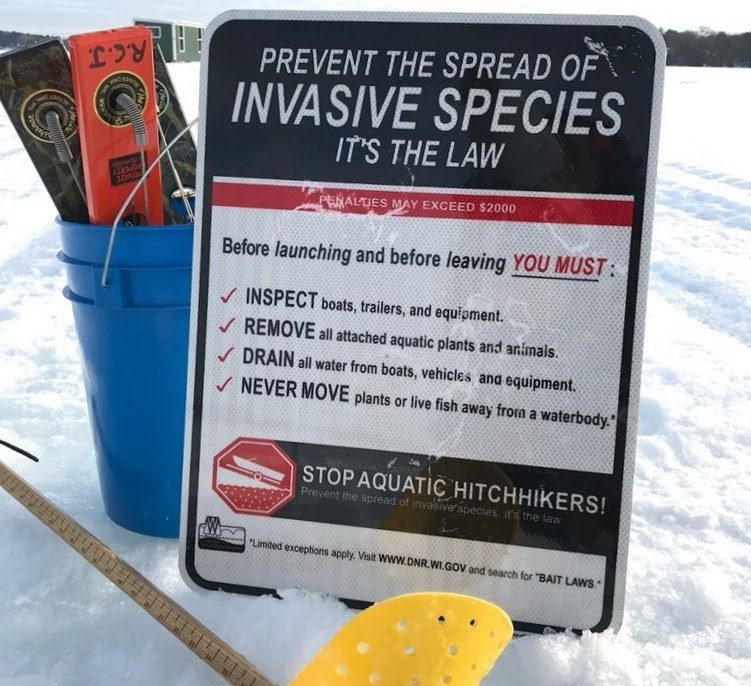Beware the Icy Invasives
DNR Reminds Winter Lake Users to Prevent the Spread of Aquatic Invasive Species
Posted by Wisconsin Lakes staff; article from WI Dept of Natural Resources
Jeanne Scherer, UW-Extension Aquatic Invasive Species Outreach Specialist, WI Lake Leaders Institute Graduate, and friend of Wisconsin Lakes, recently posted this timely reminder via the Wisconsin Department of Natural Resources. Jeanne can be contacted at jeanne.scherer@wisc.edu or 608-720-0195

The Wisconsin Department of Natural Resources (DNR) and UW-Extension are asking anglers to help prevent the spread of aquatic invasive species in Wisconsin’s lakes and rivers while ice fishing this winter.
Aquatic invasive species have made their way into Wisconsin’s waterways. Still, anglers can reduce the transmission of these invasives even in the winter by checking for and removing any mud or plant material clinging to their gear, including sleds used to haul supplies, before leaving fishing spots.
Invasive species are non-native plants, animals and diseases that cause great ecological, environmental or economic harm. Aquatic invasive species can crowd out native plants and animals and threaten the quality of boating and fishing in Wisconsin waters.
Curly-leaf pondweed and Eurasian watermilfoil are two aquatic invasive species that remain hardy in the winter under the ice, giving them an advantage over our native aquatic plants. The plant-like algae starry stonewort dies back for winter, but its tiny, star-shaped bulbils can be present on plants yanked up through the ice or in the mud that can come up if the bottom is disturbed by augers. Disease and the larvae of invasive snails and mussels can also be present in the water and mud in winter.
Because of the possible spread of diseases like Viral Hemorrhagic Septicemia (VHS) that can threaten fish populations, it is important to only buy minnows from a licensed Wisconsin bait dealer. Up to two gallons of water may be kept for minnows provided they will be used on the same waterbody or if no lake or river water from the fishing site(s) has been added. Dead bait must be preserved in ways that do not require freezing or refrigeration. Visit the DNR’s webpage on bait preservation to learn more. Find more rules regarding bait in the current fishing regulations.
A few minutes of preventative action can help preserve and protect waterways for generations to come. Before stepping onto the ice to fish and when leaving, ice anglers should:
- Inspect boats, trailers and ice fishing equipment for attached aquatic plants, animals or mud
- Remove all attached plants or animals
- Drain all water from buckets and containers
- Never move live fish away from a waterbody (fish out of water = dead)
- Dispose of unwanted bait in the trash
To learn more about invasive species and their impacts on Wisconsin’s waters and economy, visit the DNR’s aquatic invasive species webpage.

